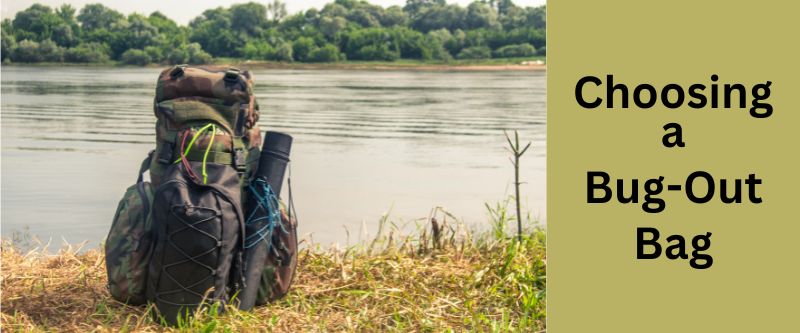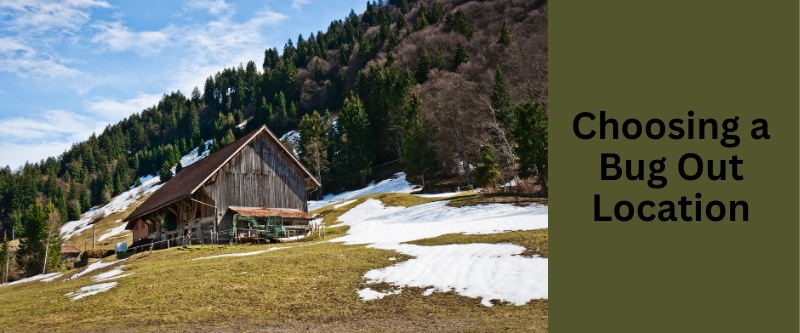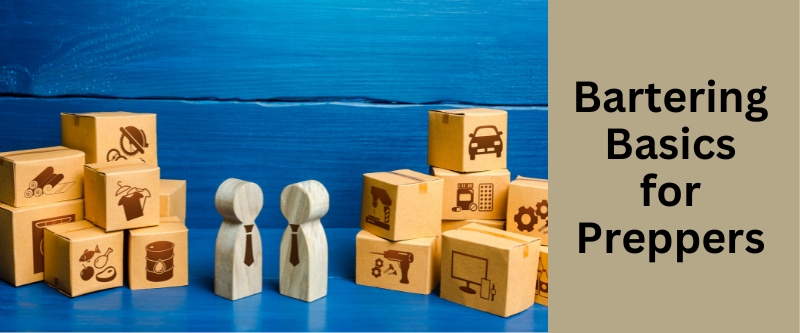Selecting the Perfect Bug-Out Bag
Table of Contents
Bag Size and Capacity: Finding Your Perfect Fit
When it comes to preparing for uncertain times, having the right bug out bag can make all the difference. A well-chosen bug out bag ensures that you have essential survival gear and supplies at the ready, no matter the situation. And one of the most critical factors to consider when selecting your bug out bag is its size and capacity.
Choosing the Right Size
Selecting the right size for your bug out bag is akin to finding a pair of shoes that fit perfectly. If it’s too small, you won’t be able to carry all your essential gear. If it’s too large, you risk overpacking, which will slow you down, hinder your mobility, and even hurt you. The key here is balance.
Consider the duration you’re preparing for. Are you packing for a 72-hour scenario or a more extended period? A daypack might suffice for short-term needs, but for longer durations, you’ll need a bag with a higher capacity.
Assessing Capacity Needs
To determine the right capacity for your bug out bag, make a list of essential items you’ll need during an emergency. Check out the Bug Out Bag section in our Ultimate Prepper Checklist. Having a clear inventory of the gear you want to pack helps you estimate the required capacity.
And don’t forget that a bag that is too big or is overloaded will result in discomfort, fatigue, and even injury. Prioritize items based on their importance and versatility. Essential survival gear should take precedence over non-essential comfort items.
Auto-Bag vs Trek-Bag
In our checklist on bug-out bags we distinguish between an Auto-Bag and a Trek-Bag. The Auto-Bag is a high capacity container that you load in your car or truck, if you are bugging out on wheels. The Trek Bag is one you carry on your back and is much smaller than the Auto-Bag.
If you bug-out on wheels, you want to load your car or truck up with both the Auto-Bag and the Trek-Bag. If along the way you are forced to abandon the vehicle, you leave with the Trek-Back on your back.
It is the Trek-Bag we are discussing here.
Balancing Size and Mobility
While it’s tempting to carry as many supplies as possible, remember that mobility is crucial during an emergency. A bulky bag can slow you down and hinder your ability to react to circumstances.
Look for bug out bags that offer a balance between capacity and mobility. Opt for a bag that allows you to carry essentials comfortably while maintaining your agility. Consider adjustable straps and suspension systems that distribute weight evenly, preventing strain on your back and shoulders and helping you stay mobile.
Balancing Weight and Portability
In a bug out scenario, every ounce matters. Carrying unnecessary weight can slow you down and drain your energy. On the other hand, sacrificing essential items for the sake of lightness can compromise your preparedness. Striking the right balance between weight and portability is key.
Lightweight Design
A lightweight bug out bag allows you to move more swiftly and comfortably. Look for bags that use lightweight yet durable materials.
Keep in mind that while a lighter bag is ideal, you shouldn’t sacrifice important features or quality for the sake of shedding a few ounces. Prioritize lightweight design without compromising on functionality.
Assessing Pack Weight
When selecting a bug out bag, consider how much weight you can comfortably carry over long distances. The rule of thumb is to keep your pack weight at around 20-25% of your body weight. This ensures that you’re not overburdened.
Remember that the weight of your bag includes both the bag itself and also its contents. A well-organized bag (see below) allows you to distribute weight evenly and prevents certain areas from becoming unnecessarily heavy.
Pro Tip: As part and parcel of purchasing, assembling, and getting yourself organized with the contents of your bug out bag, weigh everything and keep track of individual weights on a spreadsheet. You will be surprised at how fast the cumulation of things gets heavy
Prioritizing Essentials
Strategically select and prioritize the gear and supplies you’ll carry in your bug out bag. Focus on items that serve multiple purposes and eliminate redundancies. For instance, a multi-tool that combines various tools in one can save space and reduce weight.
Eliminate items that you can do without or that have limited applicability. Prioritizie essentials and avoid unnecessary items to keep your pack weight manageable while maintaining preparedness.
The cumulative weighing exercise we just mentioned will help in all this.
Comfort and Ergonomics
Survival situations can be physically demanding, and the last thing you want is a bug out bag that adds to your discomfort. The comfort and ergonomics of your chosen bag play a big role in your ability to move quickly and efficiently. A bag that’s ill-fitting or uncomfortable can lead to fatigue, pain, and even injuries.
Internal Frame Design
An internal frame provides the structure that will distrtribute weight evenly. The frame is either permanently sewn into the fabric or is contained within pockets and is removable.
Some bags come with external frames, like the military style ALICE pack. This makes them more rigid and allows for a greater load capacity. But it does add complexity to the situation. So we would generally recommend staying wtth an internal frame design.
Avoid bags without a frame. This would be like wearing a sack of potatoes on your back.
Adjustable Straps and Harness
A well-designed harness system is essential for evenly distributing the weight of your bug out bag. Look for adjustable shoulder straps, sternum straps, and hip belts. These let you fit the bag to your body and will reduce strain on your shoulders and back.
Properly adjusted straps ensure that the bag sits snugly against your body without bouncing around. This stability is particularly important when you’re navigating rough terrain or moving quickly.
Padded Straps and Back Support
Imagine trekking through rugged terrain with a bag that digs into your shoulders and strains your back. Not a pleasant thought, right? That’s why padded shoulder straps and a supportive back panel are essential features to look for in a bug out bag.
Padded shoulder straps distribute weight evenly, reducing pressure points on your shoulders. A well-designed back panel with padding or ventilation channels minimizes sweating and discomfort during long treks. You want a bag with adjustable straps.
Hip Belt and Load Distribution
While shoulder straps carry a portion of the load, a hip belt takes the weight off your shoulders and places it on your hips, which is where your body’s center of gravity lies. This feature is important with larger bug out bags with high capacities.
A well-padded hip belt prevents the bag from sagging and helps maintain balance. Also, look for a bag with load-lifting straps that allow you to adjust the position of the bag for better weight distribution.
Ventilation and Breathability
When you’re on the move, your body generates heat, and wearing a backpack can lead to sweat accumulation. Bags with built-in ventilation and breathability can definitely improve your comfort level.
Look for bags with mesh panels or air channels that allow air to circulate between your back and the bag. This will prevent excessive sweating and help keep you cool. Ventilation helps keep you comfortable and also helps prevent skin irritation.
Organizational Features
Modular Attachment Systems
Modularity is key when it comes to bug out bags. Many bags come equipped with MOLLE (Modular Lightweight Load-carrying Equipment) webbing and attachment points. This lets you customize the bag by attaching additional pouches, pockets, and accessories.
MOLLE systems provide versatility and flexibility in how you use your bag. You can attach gear externally, freeing up internal space for larger items. This allows you to expand and adapt your bag as circumstances require.
Hook-and-Loop Panels
Some bug out bags come equipped with hook-and-loop panels (like Velcro) on the exterior. These panels allow you to attach patches, ID tags, or accessory pouches. Customizing your bag with patches or insignias can add a touch of personalization and make your bag easily identifiable. However, don’t do this in ways that will draw unwanted attention.
Accessibility and Organization
You want quick access to essential items. In the chaos of a survival scenario, time is of the essence. You don’t want to waste precious moments rummaging through your bug out bag to find a specific item. So you want a well organized bag.
Multiple Compartments and Pockets
You don’t want clutter in your bug out bag. You want to be able to find what you want fast, especially when you’re under stress. And bug out bags with multiple compartments, pockets, and dividers help you categorize and organize your gear logically and get to it quickly.
Consider what items you’ll need frequent access to, such as first aid supplies or a flashlight. Look for bags with exterior pockets or mesh sleeves that provide easy access without the need to open the main compartment.
Keep valuables and sensitive items inside and use external pockets for quick access.
Quick-Release Buckles and Zippers
During emergencies, you might need to access your gear in a hurry. Bags with quick-release buckles and easy-to-grasp zippers enable you to open your bag swiftly and without fumbling.
Quick-release buckles allow you to remove the bag quickly, while durable and reliable zippers ensure that your bag opens smoothly even under pressure. Test the zippers and buckles before purchasing to ensure they meet your standards for ease of use.
Build Quality, Durability, and Weather Resistance
When you’re out in the wilderness or navigating through urban chaos, the last thing you want is for your bug out bag to fail you. So you want a bag that is well built, durable, and weather resistant. Let’s explore why these factors are non-negotiable when selecting your bug out bag.
Material Quality & Construction
The material of your bug out bag can significantly impact its longevity and performance. Look for bags made from nylon, polyester, or Cordura. Cordura is a type of nylon used by military and law enforcement. These materials resist tears, abrasions, and wear.
Additionally, be sure that the bag is water-resistant or waterproof. You don’t want your gear getting wet. Some bags come with waterproof coatings or removable rain covers to keep your supplies dry.
Zippers and Hardware
Zippers are one of the most critical components of a bug out bag. Poor-quality zippers can fail at the worst possible moment, rendering your bag useless. Opt for bags with robust and reliable YKK zippers or similar high-quality options.
Hardware such as buckles, clips, and D-rings should also be built to last. Metal hardware is generally more durable than plastic alternatives. However, plastic hardware can be lighter and less prone to corrosion.
Reinforced Stitching and Seams
The devil is in the details, and in the case of bug out bags, it’s the stitching and seams that matter. Reinforced stitching ensures that your bag can withstand the weight of your gear without coming apart at the seams. Look for double or triple stitching in high-stress areas, such as the straps and attachment points.
Inspect the seams of the bag carefully. Are they neatly sewn and reinforced? Are there any loose threads? Check the bag for quality and craftsmanship.
Water-Resistant or Waterproof Options
You do not want the contents of your bug-out bag to get wet. And a bag with water-resistant or waterproof properties provides an added layer of protection. Water-resistant bags repel light rain and splashes, while waterproof bags can withstand submersion in water.
Look for bags with waterproof zippers and sealed seams.
If you’re likely to face rainy conditions or need to cross bodies of water, investing in a waterproof bag could be a wise decision. Now waterproofing can add weight, so you need to balance this with other factors like capacity and mobility.
UV Resistance and Color Selection
Sunlight causes fabric to deteriorate over time. So UV-resistant materials can prolong the lifespan of your bag.
Choose a bag in a darker color, such as black,brown, or dark green. These colors not only help camouflage your presence but also resist fading and staining caused by prolonged sun exposure. However, while you want to camouflage your presence, do not pick a bag in actual camouflage patterns. This will just call attention to yourself.
Budget Considerations
The goal is to ffind value without sacrificing quality
While it’s tempting to invest in the most expensive bug out bag on the market, it’s important to find a balance between quality and your budget.
Determining Your Budget
Before you start shopping, determine how much you’re willing to spend on a bug out bag. But don’t cheap out on this. Remember that, if you have to bug out, there is a lot riding in your bag.
Value vs. Cost
Focus on the value a bag offers rather than just its cost. A slightly higher-priced bag that meets all your criteria and is built to last can be a better long-term investment than a cheaper bag that may not hold up when you need it most.
Research brands and models that provide a good balance of quality, features, and price. Don’t be afraid to spend a bit more for a bag that offers the durability and functionality you need.
Conclusion: Finding Your Perfect Bug Out Bag
Selecting the right bug out bag is a critical decision that directly impacts your preparedness and safety. Consider size, capacity, organizational features, comfort, durability, budget, and customization to make an informed choice that meets your unique needs. This is not easy. There are a lot of trade-offs you have to make.
Remember that no single bug out bag is perfect for everyone. Your choice should reflect your individual circumstances, preferences, and anticipated scenarios.
Picks for Bug Out Bags
When it comes to selecting a bug out bag, several brands have gained a reputation for producing high-quality and reliable options. Here are some brands and bags worth considering. And among them they cover pretty much every available option, including firearm accomodation. Prices range from budget to premium
We do not make specific recommendations because everybody’s needs are different. Also we are not familiar with every bag on this list but all have been favorably reviewed by others.
Q & A
Q: How do I determine the right size for my bug out bag?
A: Consider the duration of your expected use and the types of items you need to carry. A 72-hour bag is a common starting point.
Q: What’s the ideal weight for a bug out bag?
A: A fully loaded bug out bag should generally not exceed 20-25% of your body weight to avoid strain and discomfort.
Q: Should I buy a bug out bag with an included survival kit?
A: It depends on your level of preparedness and the quality of the included items. Building your survival kit might offer more customization.
Q: Can I use a regular backpack as a bug out bag?
A: While a regular backpack can work in a pinch, purpose-built bug out bags offer specialized features for emergency situations.
Q: How often should I review and update my bug out bag?
A: Regularly review and update your bag at least twice a year and ensure that the contents are still relevant and in good condition.



















Leave a Reply